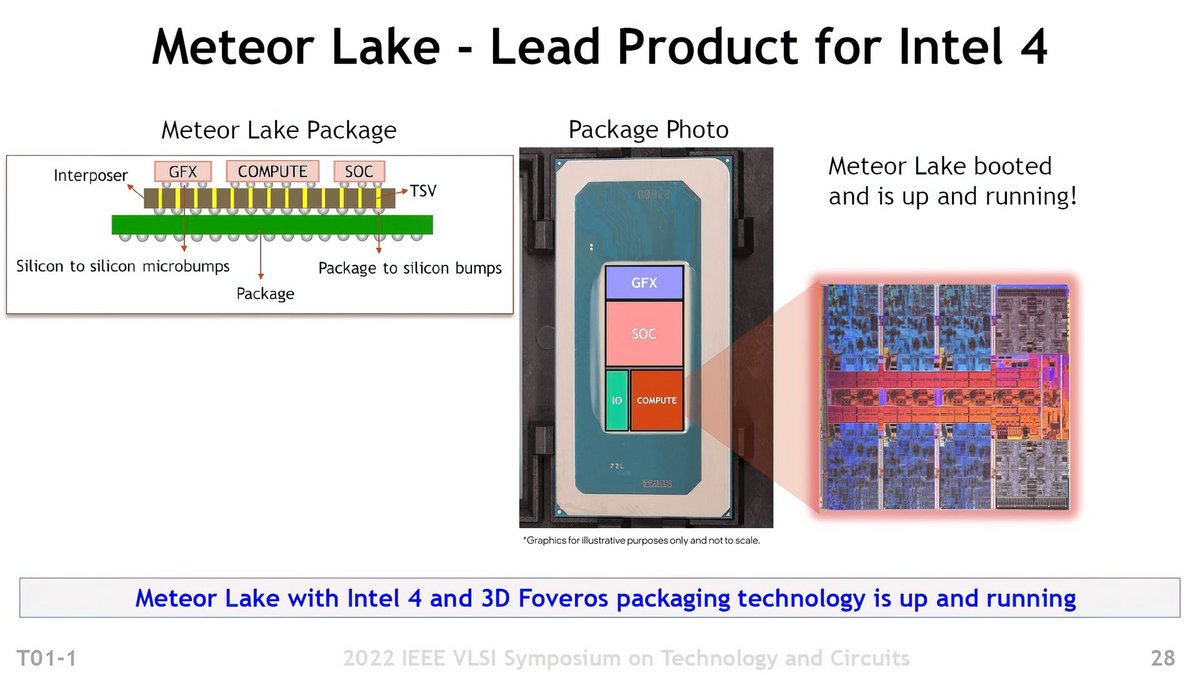Called “Intel 4”, the process will be used on the ranges of processors Meteor Lake and Granite Rapids.
During the IEEE Symposium on VLSI Technology & Circuits held last month in Hawaii, Intel reviewed recent progress on its upcoming etching processes.
Intel 4, the new name of 7 nm
The most assiduous of you will inevitably remember the problems encountered by Intel in moving towards the 10 nm engraving process. Delays had then succeeded delays and the American seemed unable to raise the bar.
Three years later, the situation is quite different. Not only the 12e generation of Intel processors is a success, but the outlook is excellent as evidenced by this announcement made in Hawaii. Intel therefore confirmed that the 7 nm process was on the right track.
In reality, things are going even better than that since there is talk of entering mass production during the second half of this year 2022. Recall that the 7 nm process is now known at Intel as Intel 4 .
Performance up by 20 to 40%
The revision of the Intel nomenclature dates from July 2021. It was designed to better reflect the discrepancies that exist between foundries, Intel explaining that the processes it uses are more efficient – higher density – than those of its competitors.
In the case of the Intel 4, the company emphasizes that it makes possible an increase in performance of around 20% at equivalent or even lower power consumption. Intel also mentions an increase in performance of around 40% at the same frequency.
The Intel 4 uses EUV lithography and achieves a transistor density twice that of the Intel 7 (another name for the American’s 10 nm) which used ESF. The Intel 4 will be used for Meteor Lake consumer CPUs, but also Granite Rapids enterprise chips.
Intel 3 already on track
If all goes according to plan – and it seems to be on the way – the release of Meteor Lake will be in the fall of 2023. Various novelties are expected with this line of processors such as the implementation of a design known as chiplet as opposed to monolithic components.

Meteor Lake will thus use a “flexible” architecture whose structure based on “tiles” will allow great flexibility. The 14e generation of Intel processors will also be an opportunity to introduce the Foveros 3D technique which modifies the packaging by literally stacking the chips rather than relying on a two-dimensional construction.
Finally, Intel took advantage of the IEEE Symposium on VLSI Technology & Circuits to go even further. After the Intel 4, he is indeed considering the Intel 3, which should enter production next year and offer a further increase in performance: we are talking about 18% compared to the Intel 4.
On the same subject :
A non-definitive Intel Core i9-13900 processor scrutinized: up to 20% more performance
Source : WCCFTech

3